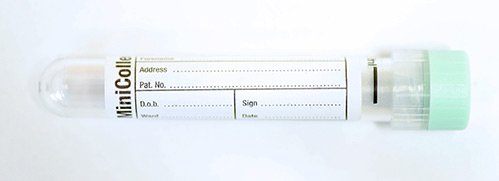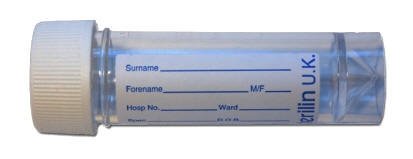Amino acids
Chemical Pathology
Notes
Amino acids play a crucial role as building blocks of proteins and as intermediates in metabolism and are implicated in several metabolic defects.
Characteristic profiles or deficiency/excess of particular amino acids may suggest a metabolic diagnosis. Once diagnosed amino acid levels can be also used for monitoring purposes.
For quantitative amino acids, plasma is normally the preferred sample type and should be ordered as the first line test. However, disorders of renal amino acid transport, such as cystinuria, will be missed with plasma analysis alone and a urine sample should also be sent if these are suspected.
Quantitative amino acid analysis in cerebrospinal fluid (CSF) is rarely indicated, the main clinical indication for this test is investigation of non-ketotic hyperglycinaemia in infants. For investigation of seizures/encephalopathy in adults where a metabolic cause is suspected, plasma amino acids and urine organic acids are the recommended first line tests.
Sample requirements
Plasma
For adults, blood taken into a 6mL lithium heparin tube:

For children, blood taken into a 2ml lithium heparin tube:

For neonates, blood taken into a 0.8mL lithium heparin minicollect tube:

Urine
Urine amino acids: 5mL urine collected into a 30mL white top Universal:

CSF
CSF amino acids/CSF glycine: 1mL CSF collected into a 30mL white top Universal along with a paired lithium heparin sample (collected within 2 hours of lumbar puncture).
Blood stained CSF samples cannot be processed as amino acid levels are much higher in blood and results will not be interpretable.
Storage/transport
Do not store. Send immediately to the laboratory.
Required information
Relevant clinical details including known or possible diagnosis, relevant family history, any amino acid supplements.
Turnaround times
Samples are sent to Southmead Hospital, Bristol for analysis, with results available within 4 weeks.
Reference ranges
Plasma amino acid reference ranges:
| Amino acid | Age <4m | Age >4m | Units |
|---|---|---|---|
| Taurine | 20 - 256 | 16 - 142 | µmol/L |
| Aspartic acid | 5 - 100 | 0 - 173 | µmol/L |
| Threonine | 114 - 336 | 81 - 217 | µmol/L |
| Serine | 94 - 324 | 88 - 288 | µmol/L |
| Glutamine | 530 - 960 | 544 - 836 | µmol/L |
| Proline | 107 - 435 | 185 - 285 | µmol/L |
| Glycine | 224 - 515 | 100 - 390 | µmol/L |
| Alanine | 236 - 675 | 176 - 480 | µmol/L |
| Cystine | 35 - 92 | 20 - 100 | µmol/L |
| Valine | 80 - 370 | 100 - 330 | µmol/L |
| Methionine | 10 - 96 | 5 - 80 | µmol/L |
| Iso-leucine | 27 - 105 | 23 - 98 | µmol/L |
| Leucine | 46 - 230 | 60 - 220 | µmol/L |
| Tyrosine | 42 - 196 | 45 - 100 | µmol/L |
| Phenylalanine | 42 - 182 | 21 - 133 | µmol/L |
| Ornithine | 49 - 214 | 25 - 105 | µmol/L |
| Lysine | 114 - 316 | 110 - 284 | µmol/L |
| Histidine | 49 - 195 | 20 - 220 | µmol/L |
| Arginine | 22 - 155 | 32 - 130 | µmol/L |
| Citrulline | 5 - 63 | 20 - 70 | µmol/L |
| Glutamic acid | 20 -142 | 5 -130 | µmol/L |
Further information
Please refer to the guidelines produced by the National Metabolic Biochemistry Network on amino acid analysis.
Page last updated: 04/08/2023